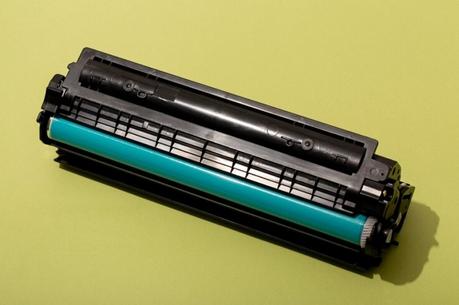
Water resistance is a critical characteristic found in various products, playing a pivotal role in preserving their functionality and longevity, particularly in adverse environmental conditions. The ability of cartridges, whether they are printer cartridges, ammunition cartridges, or other types, to withstand exposure to water is an essential factor in their performance and durability. Understanding the degree of water resistance in cartridges can be crucial for both consumers and manufacturers, ensuring that these devices remain functional even when subjected to moisture or liquid contact.
What are Cartridges?
Cartridges are versatile components designed to encase and protect specific substances or items. They come in various forms and serve a multitude of purposes across different industries. Some common examples of cartridges include printer cartridges, ammunition cartridges, inkjet cartridges, and game console cartridges. These cartridges are typically constructed from materials such as plastic, metal, or a combination of both, tailored to the specific needs of the product they serve.
Types of Printer Cartridges
Printer cartridges are vital components in modern printing technology, facilitating the transformation of digital data into tangible documents and images. These cartridges are available in various types, each designed to cater to specific printing needs. Beyond their functionality, many printer cartridges also incorporate water resistance features to ensure they remain effective, even in environments where moisture exposure may occur. Now, let's explore some of the common types of printer cartridges and their respective characteristics:
Inkjet Cartridges
Inkjet cartridges are widely used in home and office printers, known for their versatility and ability to produce high-quality color prints. They contain liquid ink, which is sprayed onto the paper in precise patterns to create sharp text and vibrant images. Inkjet cartridges are meticulously designed to balance ink containment and water resistance.
Laser Toner Cartridges
Laser toner cartridges are the preferred choice for high-volume, high-speed printing, commonly found in office settings. Unlike inkjet cartridges, they use dry toner powder to create images on paper. While not as susceptible to water damage as liquid ink, laser toner cartridges are also designed with a degree of water resistance to protect the printed output.
Solid Ink Cartridges
Solid ink cartridges are less common but offer unique advantages. They contain solid ink sticks that are melted and applied to the paper during printing. Solid ink technology boasts exceptional color accuracy and is renowned for its environmental friendliness. These cartridges are typically resistant to moisture, ensuring consistent print quality.
Ribbon Cartridges
Ribbon cartridges are used in dot matrix and some impact printers. They contain an inked ribbon that strikes the paper to form characters and images. While these cartridges are less common in modern printing, they are known for their durability and resistance to moisture, making them suitable for specific industrial applications.
Importance of Water Resistance in Cartridges
The importance of water resistance in cartridges cannot be overstated, as it directly influences their functionality and lifespan. Consider several scenarios where water resistance plays a crucial role:
- Outdoor Use: Printers and cameras used in outdoor environments are often exposed to rain, dew, or high humidity. Water-resistant cartridges ensure uninterrupted operation, preventing water damage to sensitive internal components.
- Accidental Exposure: Accidents happen, and spills or accidental splashes of water are common occurrences in homes and workplaces. Cartridges with water resistance provide an added layer of protection against potential damage in these situations.
- Transportation and Storage: Cartridges are frequently transported and stored, and they may encounter moisture during these processes. Water resistance is essential to prevent damage during transit or while stored in less-than-ideal conditions.
Testing and Certification for Water Resistance

To assess water resistance, cartridges undergo rigorous testing methods. These tests simulate various levels of exposure to moisture, allowing manufacturers to evaluate a cartridge's ability to withstand water-related challenges. Industry standards and certifications, such as the International Electrotechnical Commission (IEC) IP ratings, provide detailed guidelines and benchmarks for manufacturers to meet specific water resistance standards. These standards ensure that consumers can rely on the water resistance claims made by cartridge manufacturers.
How to Ensure Water Resistance in Cartridges
For consumers, safeguarding cartridges from water damage involves responsible handling and storage practices. Cartridges should be stored in a cool, dry place, away from potential sources of moisture or liquid. Additionally, it's crucial to avoid storing cartridges in areas prone to water leaks or humidity, which can compromise their integrity over time.
On the manufacturing side, enhancing water resistance in cartridges involves a multifaceted approach. Manufacturers continuously invest in research and development to improve design elements, employ better sealing techniques, and integrate waterproof materials into their cartridge products. These efforts collectively contribute to the creation of more robust, water-resistant cartridges that offer superior performance and reliability.
Conclusion
In conclusion, water resistance is a critical attribute in cartridges, significantly influencing their functionality and lifespan. While cartridges are not entirely waterproof, they are designed with specific features to provide a level of protection against moisture and water exposure. Both consumers and manufacturers play pivotal roles in ensuring that cartridges remain reliable in various conditions. By following responsible handling and storage practices and continuously innovating in design and materials, cartridges can continue to improve their water resistance and overall durability. As technology advances, we can anticipate cartridges becoming increasingly resilient in the face of environmental challenges, ensuring their consistent performance in the years to come.

